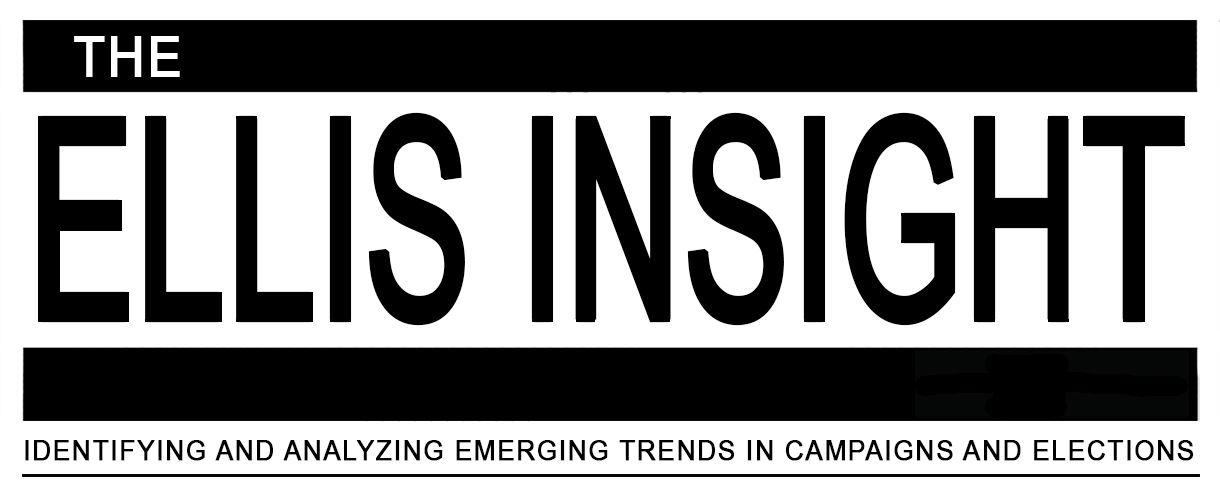By Jim Ellis — Monday, April 29, 2024
States
Utah: GOP Nominating Convention Upends Establishment — After being booed during his speech to the Republican nominating convention delegates on Saturday, Gov. Spencer Cox fell to state Rep. Phil Lyman (R-Blanding) by a whopping 67-33 percent vote. To qualify for the ballot in a statewide race, a candidate needed to attract at least 40 percent of the delegate vote. While the governor did not qualify through the convention process, he had filed to get the necessary 28,000 valid petition signatures prior to the party assembly to guarantee his ballot position in the June 25 Republican primary.In the Senate race, Riverton Mayor Trent Staggs rode former President Donald Trump’s endorsement, which was announced just before the convention began. Staggs proved himself the delegates’ favorite with a 70-30 percent victory over Rep. John Curtis (R-Provo).
The vote makes Mayor Staggs the only candidate qualifying through the convention process. Rep. Curtis submitted the requisite number of petitions, so he, too, will be on the primary ballot. Joining them are a pair of others qualifying via petition, former state House Speaker Brad Wilson, and businessman Jason Walton. Attorney Brent Orrin Hatch, son of the late Sen. Orrin Hatch, who fell short of the 28,000 signature requirement, did not receive 40 percent delegate support. Therefore, he is eliminated from further competition.
In the House races, both Reps. Blake Moore (R-Salt Lake City) and Celeste Maloy (R-Cedar City) finished second to a Republican opponent but cleared the 40 percent threshold. Rep. Moore had previously qualified through petition, but Rep. Maloy was a “convention only” candidate. Rep. Burgess Owens (R-Salt Lake City) was renominated by acclamation. In the open 3rd CD, the only candidate to win the delegate support is state Sen. Mike Kennedy (R-American Fork). Qualifying through petition are State Auditor John “Frugal” Dougall, Roosevelt Mayor J.R. Bird, and businessman Case Lawrence. The Utah primary will be conducted on June 25. The eventual GOP nominee in all races will be favored in the general election.
House
FL-8: Rep. Posey Withdraws — After filing for re-election, eight-term Florida US Rep. Bill Posey (R-Rockledge) announced that he is withdrawing from the race.
Immediately, and obviously after receiving a tip from the congressman, former state Senate President Mike Haridopolos (R) filed his own federal campaign committee. Since Florida does not extend candidate filing time when the incumbent does not seek re-election, Haridopolos is clearly the front runner to succeed the 30-year office holder. In addition to his 16 years in Congress, Rep. Posey served another 16 years in the legislature, eight in each house.
Attorney Joe Babits and technology company executive John Hearton, both viewed as minor candidates, are the only other individuals to have declared their candidacies. For the Democrats, West Melbourne City Councilman Don McDow is favored for the party nomination over attorney Sandy Kennedy.
Florida’s 8th District, that stretches from Titusville to Vero Beach on the Atlantic Coast, is safely Republican. The FiveThirtyEight data organization rates the seat as R+23. Former President Trump carried the district, 58-41 percent, in 2020. The Posey retirement means there are now 52 open seats headed into the next election, with 26 coming from the Democratic Conference versus the Republicans’ 25. One seat is newly created in Alabama.
MT-2: Ex-Rep. Rehberg Trails in New Poll — Guidant Polling & Strategy just released the results of their recent Montana Republican primary congressional poll (April 14-17; 400 likely MT-2 Republican primary voters). The data find State Auditor Troy Downing (R) leading former Congressman Denny Rehberg and State Superintendent of Public Instruction Elsie Arntzen, 38-26-10 percent.
Ex-Rep. Rehberg, who represented the at-large district for 12 years after serving six years as lieutenant governor, is being heavily outspent. Downing, through March 31, had spent just over $630,000 compared to Rehberg’s $7,300. The former congressman then infused his own campaign treasury with a loan of $300,000.
The winner of the June 4 primary election will succeed retiring Rep. Matt Rosendale (R-Glendive) in the safely Republican eastern Montana seat.







